Every trip, we like to see a bit of a place, exploring some of the towns and regions.
It's a way to know a place, looking for those local spots, flavors, colors, histories.
Certainly that was the case on our trip to Croatia, between Dubrovnik, out to Bosnia, Mostar to Sarajevo, to Korčula.
At a certain point, time becomes a sort of abstraction.
I can’t really remember what day it is.
Early in the week, we jumped at 915 boat, saying goodbye to our little alley in
Korčula to make our way to Split, Croatia’s second largest city, and home to Roman Emperor Diocletian’s palace, north on the coast.
A long trip, over four hours, inside, we’re a little blurry.
By the time it's done, we stumble into the chaos of the ferries, train station and markets of folks selling goods from the old Yugoslavia, home made wine and fresh fish, as well as old coffee grinders.
Through the gate of Diocletian's Palace, we wander along a maze of markets and restaurants, through winding cavernous alleys and third century streets of this ancient metropolis, looking for a recommended restaurant in the old Roman Villa, hot… sweltering. It's burning in Greece. We feel the heat. Finally we just stop and regroup, eating a bite before making our way to the Old City Museum, a 15th Century townhouse and off to the Cathedral St Dujma, through the crypt and baptistry… It's a whirlwind...of art and history, before we make our way back for a 430 bus, picking up a few pins from the 1984 Olympics and an old world bronze coffee grinders. And jumping on the 430 bus out of town to Sibenik.
Missed the Archaeology Museum, but sometimes its too much.
Each day we are learning.
Walking up to our stay, we stumble into Konoba Nostalgija, a tiny little restaurant outside the old city, stopping for a meal. With a new menu nightly, the hosts tell us about the menu, a vibrant local cuisine that changes every night. Grandma’s ragu the first night, little anchovies fried with green beans and a little vinegar the next night.
Over dinner we talk about Ivana Brlić-Mažuranić, a Croatian writer, who wrote fairy tales.
Her haircut in the photo is very much worth emulating.
So is her writing.
Back at our room, I sit outside on the balcony with a view of the old city, greeting a bird whose visiting, taking in our journey Korcula to Split for the afternoon before a bus ride across gorgeous terrain to Sibenic!!!
A rest day is certainly needed.
Late in the morning, we’re off to the Cathedral of St James, a Romanesque and Gothic structure built between 1431- to 1536, during the Turkish threat and the plague. It was deemed a UNESCO world heritage site in 2000 after the dome was bombed during a strike during the homeland war in 1991. Walking up to the Cathedral, I was taken by frieze the 71 life sized human faces and three lion heads, by Juraj Dalmatinac. A model of Renaissance Humanism, psychological portraits of merchants joking, people smiling, grimacing, angry, people in the square arguing, sailors drinking, 71 busts of friends and enemies, of the artist, a self portrait, a panorama of inner feelings, laughter, grief, regret, happiness ideas whirling there at the cathedral, the shells of St James, regeneration, and renewal, spinning through time.
A little snack just up the winding path from the Cathedral and then off to the Banj Town beach, where kids are jumping off a pier, jump after jump, all day long in the hot sun, doing summersaults, and flips, followed by beer and cards, and another snack at our favorite restaurant in town, that was after we took our COVID home tests to get back on the plane.
We’d wanted those lovely little friend anchovies. No one had them.
So, we wandered to
And guess what they were serving - the little friend fish we were looking for.
The wine, the conversation, the welcome back drink, it turns out to be the best place to eat in Sibenik, saving us over and over again.
Just lovely.
The next morning, we walk to the waterfront. Its a boisterous scene there, guides, drunk sailors, a guy without a shirt screaming, drinking a pint. Turns out he was the ferry driver taking a break. “And they were never seen again,” Caroline and Murry commented as the ferry pulled out. Our boat whirled us to Krka park. The trip there, with water in our faces, and islands passing us by, reminded me of Sardignia. Whylie had warned us not to go there. But we went anyway. The definition of a tourist trip, a Disneyland, no way to interface with nature, a water and green museum, no guides or help, we got out there as quickly as possible. Grabbed a cab to Jadrija beach on a nearby island. Disco was playing. Green blue water. Mostly locals jumping into the water, elders, younger people, families. We enjoy some pizza and watch Beyonce videos, frolocking in the water all afternoon, more kids jumping into the water, good save, turning the worst day into the best. It's always possible.
By six, the little one was tiring.
So we grabbed the 6 PM ferry where the captain we’d met earlier in the way was still at the helm, taking the ferry back to Sibenik, with other sea drenched people, gorgeous light all the way back. An Aperol Spritz at Na Maloj Loži, a wine bar,outside our house, jotting down a few notes about it all, a moment on our nook, and off to bed.
The next day, a final trip back to Split, where we planned to catch at 740 AM ferry to Dubrovnik. We had a cab scheduled to drive us to the ferry at 545. Catch, no confirmed location for the cab. He can’t get to the old city. Where is he? We wander out to the grocery store nearby. There he is. He takes us through the hills and down to Split, stopping for a bit for a few photos as the sun comes up inTrogir, on the central Adriatic coast. And we chat away, discussing the rising income inequality in Croatia, the homeless population one never saw in Yugoslavia. Socialism, not Communism, that's what worked in Yugoslavia, he tells us. Driving looking at islands, a Roman Aqueduct, a perfect engineering feat. You didn’t have a right to speak out, but you were taken care of, he tells us, getting us to the ferry early.
And we catch the 740.
Sitting upstairs looking at the city around us, a few Americans jump on board, tripping acid, laughing, drinking absinthe, listening to rave music.
They’ve just come from an all weekend rave.
“Look at the woods and trees,” one comments, as the boat passes another island.
“If I had to leave the states, I'd just come here and wash dishes,” says one of them. “There is nothing keeping me there.”
By lunchtime we arrive in Dubrovnik and swim all afternoon, water and sun splashing on the rocks. The last couple of days were a lot. But the trip was still worthwhile.
The world is in flux, from socialism to capitalism to struggles with heat, traffic, fossil fuels and questions about sustainability.
The travel bug is out of my system for now.
It's time to go home, to write, to think, to see friends, teach, see a few clients.
Friday, up we rise and make our way back, across Europe, Italy, little Britain, across the Atlantic, Canada on our way back home.
Customs, air tram, trains, and a subways, and a dozen hours later, we are back in the glorious summer Brooklyn, summer heat, strolling home.
After a quick shower, we open our bags, pulling out various mugs and souvenirs from the markts in Sarajevo, unpacking memories from our trip, trying to tell the teenager about it all.
Now, it's a memory, like old Yugoslavia itself.
I think about all the people who talked with us over our two weeks and some of what it might have meant, a non- aligned socialism outside of the Eastern Bloc.
We are still trying to make sense of it.
How did socialism work there?
Poverty seemed to decrease, so did political expression.
And why did it unravel as a violent nationalist conflict?
The questions from the period are many.
A lot to think about.





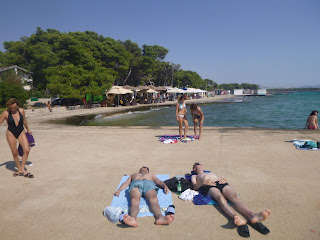


















































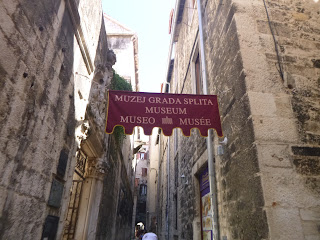








































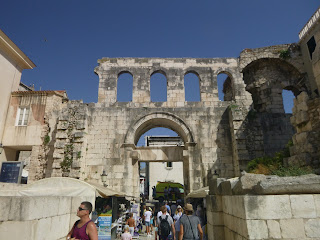
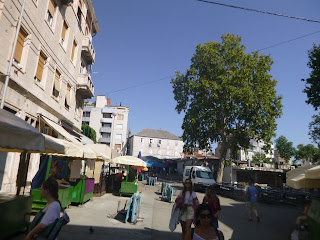




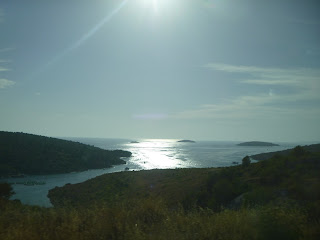









































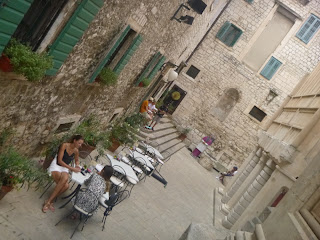




































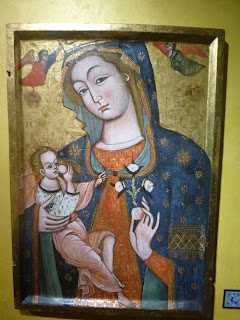

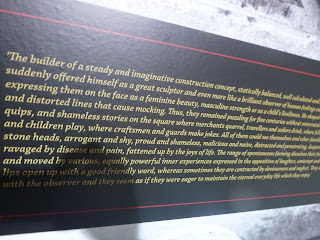









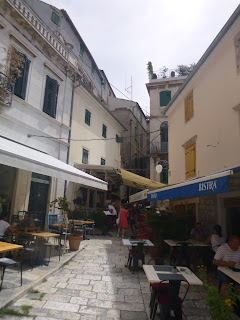
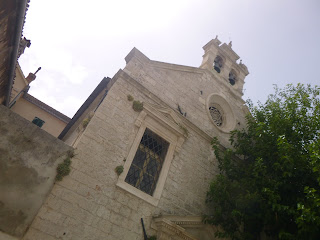











































































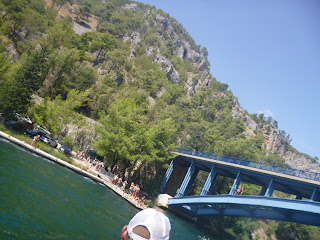


























































































































No comments:
Post a Comment